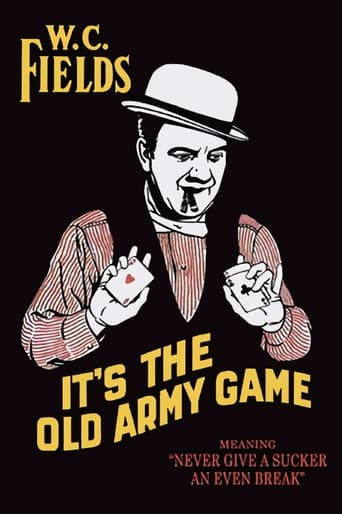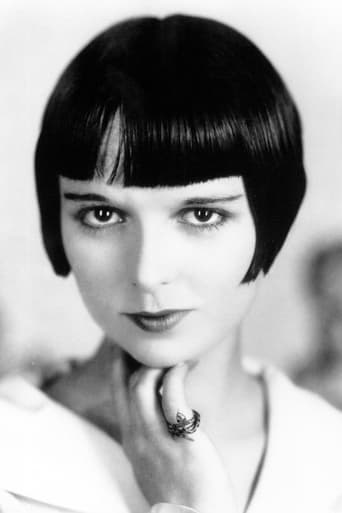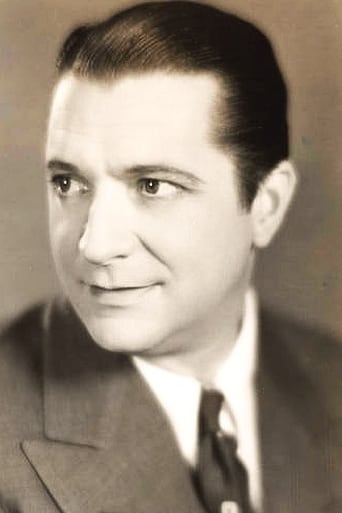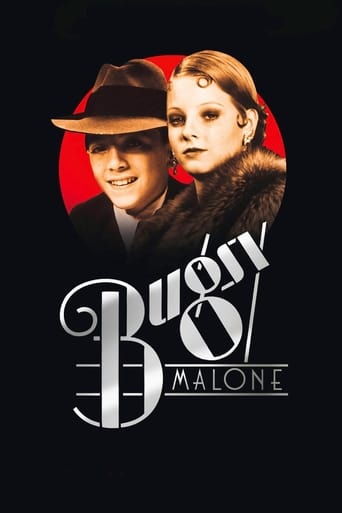It's the Old Army Game (1926)
Druggist Elmer Prettywillie is sleeping. A woman rings the night bell only to buy a two-cent stamp. Then garbage collectors waken him. Next it's firemen on a false alarm. And then a real fire.
Watch Trailer
Free Trial Channels
Cast


Similar titles
Reviews
A different way of telling a story
I think this is a new genre that they're all sort of working their way through it and haven't got all the kinks worked out yet but it's a genre that works for me.
Ok... Let's be honest. It cannot be the best movie but is quite enjoyable. The movie has the potential to develop a great plot for future movies
It is neither dumb nor smart enough to be fun, and spends way too much time with its boring human characters.
While I've always considered by self a movie fan, I've never really been big on silent films. My favorite silents tend to be horror related - movies like The Unknown with Lon Chaney and M with Peter Lorre. But having recently "discovered" Louise Brooks, I'm determined to watch more of her films. So, my Louise Brooks journey starts with It's the Old Army Game. While it's definitely a W.C. Fields vehicle, Louise Brooks really shines in the moments she's on screen.Most of It's the Old Army Game is made up of various gags or comedic bits featuring Fields. I've never been much of a Fields' fan and this movie doesn't change that much. He's hit or miss here. The two best gags are the baby and the boy in the shop. They would have been even better had the "children" involved not been so creepy looking - especially the "baby". But scenes like the picnic didn't really work with me. It overstays its welcome. I did enjoy the subplot featuring the con man's land deal in New York. More of this would have been good. In the end, this plot thread felt horribly rushed.But as I said at the start, I watched It's the Old Army Game mostly for Louise Brooks. And she did not disappoint. She is the center of attention anytime she's on screen. She has that something special about her. Two scenes that show what I mean about Brooks are the ice cream soda scene at the beginning and the scene where Fields is trying to get something out of a lady's eye. In the first, just watching her sitting on that stool in the middle of the firemen is such an engaging visual. Those eyes - she's gorgeous. In the second scene, Brooks isn't really even in it - she's watching the events from above. But her smile is mesmerizing and infectious. You could feel her joy in what she's watching. I've got to see more of her stuff.
Once thought lost, this W.C. Fields silent comedy was later remade (more or less) as It's a Gift. Here he's a pharmacist instead of a grocer (I think the short The Pharmacist also re-uses elements from this one), and some of the gags are different. There's a subplot about Fields investing in a real estate scam. The guy who's running it (William Gaxton) has a romantic subplot with Louise Brooks, who works as Fields' counter girl. Alas, Fields without his voice is barely half as funny. His attitude remains identical, but his acerbic line readings are gone. It also doesn't help that the version presented on Youtube is run at a slow speed, making the film much longer than it should be. I wouldn't recommend it.
In his 1967 book "The Art of W.C. Fields," film historian William K. Everson bemoaned the apparent loss of much of Fields' early movie work. In a chapter devoted to eight silent films that Fields made for Paramount from 1926 to 1928, Everson wrote: "Of those eight features, not one is known to have survived." Stills from most of those films decorate Everson's book; they stare out from the pages as ghostly reminders of films believed gone for good.That was then; since Everson's book was published, copies of three of those missing features have turned up: "So's Your Old Man," "Running Wild" - and "It's the Old Army Game." (The one film in the group of eight that film historians would really like to get their hands on is "That Royle Girl," which was the second feature Fields did with D.W. Griffith, the first being "Sally of the Sawdust.")I got to see "Army Game" at the AFI Silver in Silver Spring, Maryland. As funny as the film was - and it was very funny - the experience of seeing it on the big screen was also surprisingly poignant, given its formerly lost status. Relying on contemporary reviews, Everson speculated that Fields' silent Paramount features, which were all produced by the company's New York studio, were done on the cheap and probably suffered from a "cramped 'East Coast look.'" As it turns out, "Army Game" is a very handsomely mounted production, and includes location filming in Florida and New York City (it was fairly amazing to see scenes of midtown Manhattan in 1926 and notice how much of it - the buildings, mainly - has barely changed in nearly eight decades). "Army Game" is so well produced, it was sad to think that, like Clementine, it was once thought "lost and gone forever."Partly remade as "The Pharmacist" in 1933 and "It's a Gift" in 1934, "Army Game" stars Fields as Elmer Prettywillie, a small town druggist who suffers various indignities at the hands of his relatives (no wife here, but there is an obnoxious sister and her nephew), customers and neighbors. Can a silent Fields be as funny as the talking one we're all familiar with? This film says definitely. Of course, we all know what Fields sounded like, so this can simply be a case of filling in his voice with our imaginations. But our imaginations don't stop there. In one scene, when Fields is trying to sleep on a porch swing and a baby girl (who, I'm convinced, was played by an adult female midget) stands nearby and bawls, I could hear her crying rattling in my brain.But perhaps we do miss Fields' voice, after all. One minor complaint I have about "Army Game" is that Fields' character seems to keep changing on us. In one scene, he's a milquetoast who can't bring himself to charge an overbearing woman for the two cents' worth of postage she's purchased; in another, he comes perilously close to maliciously dropping the above-mentioned baby off a balcony; in another, he's a sharpie who out-hustles a would-be hustler; in another, he's a buffoon who doesn't know the meaning of a "no trespassing" sign and calls a grandfather clock a "watch." I'm not saying a film character can't show different sides or can never surprise us with some hidden trait or ability, but Elmer Prettywillie seems to be suffering from multiple personality disorder. Had Fields been able to use his voice in this film, he might have brought all these seemingly disparate threads together, as he probably did in "It's a Gift" (which I don't remember well, it's been about 30 years since I've seen it - yipe!). "Army Game" also has an extraneous romantic subplot involving drugstore employee Louise Brooks and handsome con artist William Gaxton that threatens to split off into its own film.This was the first time I'd seen Louise Brooks in a movie, and all I can say at first blush is: Wow. As Prettywillie's young assistant, Brooks positively radiates from the screen without even trying. OK, she does try in one scene: clad in a swimsuit, leaning against a tree, head tilted back, eyes closed and trying to look heartbroken, Brooks is so obviously posing (or being posed) for the camera, it's hard not to snicker. But she does it *so* well. (The director was Edward Sutherland, who married Brooks around the time this film was made; their marriage lasted all of about two years.)In his Fields book, Everson said "Army Game" was "not remembered with any great enthusiasm" by Brooks. In her own book, "Lulu in Hollywood," Brooks, recalling her work with Gaxton, says with acerbic candor that she knew then that "our parts as the 'love interest' in a Fields comedy meant nothing." Did Brooks ever get to see "Army Game"? It's doubtful. In her 1982 book, published three years before her death, Brooks said she hadn't seen it. It's a shame - not only did she miss out on a truly funny W.C. Fields vehicle, she also missed out on seeing a delightful young actress with a pageboy-style haircut who lit up the screen every time she appeared. (Dear AFI: Could you schedule a screening of "Pandora's Box" real soon, please?)A couple of footnotes: AFI's presentation of "Army Game" featured excellent live organ accompaniment by Ray Brubacher. Also, the film, when I saw it, ran about 90 minutes, considerably longer than the running time listed by IMDb - I suspect AFI ran the film as close to "natural speed" as possible, which was a definite plus in terms of presentation.
W.C. Fields was never at his best in the silent film medium, but It's the Old Army Game is nonetheless a treat for his fans, revealing our hero in characteristic form as he offers early versions of routines later perfected in talkie classics The Pharmacist and It's a Gift. The Great Man himself looks quite youthful here, still trim in his mid-40s and quite stylish in his checked trousers and straw boater, although he also sports the unfortunate mustache he wore in all his silent comedies. Like The Cocoanuts, the stage vehicle and subsequent movie debut for The Marx Brothers, the plot of this film was inspired by the Florida land boom, a highly topical subject in the 1920s. It's the Old Army Game is built around a satirical twist, however: instead of New Yorkers snapping up cheap land in Florida, we find Florida residents snapping up cheap real estate in New York! In any case, Fields' movies were never valued for their plots, it's the gag sequences that count. This film's highlights include our hero's repeatedly thwarted attempts to take a nap on his back porch, a rather nasty confrontation with an obnoxious baby in a stroller, a very messy picnic on the lawn of a ritzy estate, and traffic difficulties filmed on location in midtown Manhattan. The porch bit is something of a dry run for the immortal sequence in It's a Gift, but here's where the silent version suffers in comparison to the talkie remake: much of the humor depends on abrupt, irritating bursts of noise, so by its very nature this routine, which was first performed on stage, wasn't ideal for silent cinema.Incidentally, during the traffic sequence Fields has an encounter with a fellow motorist who is done up in stereotypical Jewish costume, complete with derby and grizzled beard. Happily, and surprisingly, their encounter turns out to be benign, without the heavy-handed ethnic humor that mars so many comedies of the period. The gent in the derby owns a junk wagon pulled by a mule, and when Fields has auto trouble the gent tries to help out. The situation does not end happily for our hero, but that's no one's fault but his own.Broadway buffs will be interested to find that the leading man is William Gaxton, best known for his stage performance in the Gershwin musical "Of Thee I Sing," but Gaxton never had much of a movie career and frankly doesn't register strongly in this role. Then again, he was up against formidable competition, not only from Fields but from his leading lady, Louise Brooks. A major bonus of this film is the sight of this beautiful young woman in her prime. There's a memorable scene featuring Brooks and Gaxton skipping a picnic so they can romp in the woods. Every close-up of Louise is worth the price of admission-- that is, if you can find a copy of this movie in the first place. Like all too many W.C. Fields films, It's the Old Army Game is not readily available in any home-viewable format. I saw it about ten years ago at the American Museum of the Moving Image in Queens, New York. We were told before the screening that the film was still in the process of restoration, "a work in progress" soon to be completed. For the first hour or so the image looked clean and bright, but then suddenly we found ourselves watching a heavily scratched and yellowed 16mm print for the last portion. I hope the restoration work was completed, but haven't heard of any public screenings since. In any case, here's a film ripe for recovery and rediscovery!











